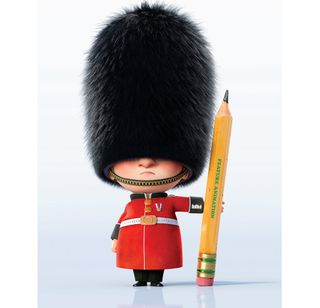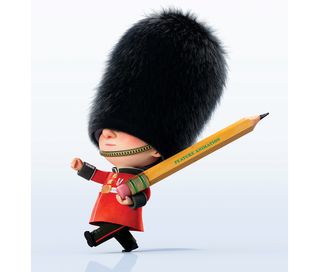With the size of the 3D industry growing year on year, it’s more important than ever to make sure your work stands out from the crowd. Whatever your skill level as a 3D artist, there are key principles that are sure to take your character animation up a level.
Character movement and gesture are vital for ensuring your characters are realistic and watchable. That means many of these tips are geared towards improving your skill as a puppet master making your characters dance.
If you want to learn more about how to design excellent characters, check out our post on character design.
01. Research, reference and record
There are many ways to study character. Make it a habit to plan your work. Look at people other than yourself. Look at actors who are similar to your character. “Good artists copy, great artists steal,” claimed Picasso. The trick is to not steal from other animation. Always take from life and make it the essence of what you referenced.
02. Notice the design in movement
Animation is designed movement and all sorts of paths of motion exist in a character. You have to design movement to fit the scene. Sometimes the design of movement in animation is overdone. Focus on how your gestures move through space. Look for ways of making it feel physical but also beautiful to watch.
03. Embrace the power of stillness

When in doubt, throw it out! Often it makes sense to just do nothing. I’m not saying don’t move the character, but look for moments to tone down the animation or find other things to do besides gesturing. In live-action films, some of the most powerful moments are subtle. Animation does not need to be overdone.
04. Understand the gesture space
It’s important to understand the area the character is gesturing in. Is it inside the body space, outside, near or below the face? What is the story point? Does it read? Does it need to be a large open gesture, or is it meant to be a secondary element? Look for areas to change between gesture spaces – contrast is a great tool.
05. Consider contrast
Texture and timing is important. Contrast: show something tense, relaxing, or a loose gesture changing into a quick move. Break up the enemy of animation: evenness. Movement can be even, but always having evenness is boring and uninteresting to watch. Think about where can you put a punctuation on a gesture.
06. Reinvent clichés
A cliché used to be a genius idea, but it was used over and over until it turned into the worst idea; an idea that everyone knows and has seen. Some common ones in animation are neck rubs, points, W gestures. If you’re going to use a popular gesture or cliché, do it a different way. Find a way to make it yours.
07. Add props

In animation I love the idea of giving the character objects to use. You are trying to make things in animation look spontaneous. Gesturing with props feels real. An animator needs to find ways of squeezing the entertainment out of scenes – just don’t overuse or overspice the shot. Use it as something to accent a scene.
08. Use head movements
Every part of a character can move, so let’s just think about the ways you gesture if you can’t use hands. If you had to tell a story using just the head, what do you do? How do you describe things? What angles does your head take? When you animate head gestures, start simple and polish. Take into account the weight of the move.
09. Avoid common mistakes
The biggest mistake is just too much. Less is more. Another is to not polish it well. It’s important to make gestures feel like they have weight and physicality. Understand that we’re trying to create characters that have a truth to them. A toy, a bug, a superhero – each will gesture differently, and will have its own language of gestures.
10. Imagine the future
What could be next for character animation? I’m interested in interaction – the ability to move cloth, hair, etc. Capture tools could be useful for gestures; a hand pose capture, a way of moving the character that might be easier than manipulated a rig… I want to see animation that pushes acting ideas in different ways. Be original, entertaining and true to the character.
This article was originally published in issue 130 of 3D Artist. Buy issue 130 or subscribe to 3D Artist.
Read more:




![Buildbox Free - How To Make 2D Platformer Game [PART 1]](https://www.danielparente.net/info/uploads/sites/3/2020/01/Buildbox-Free-How-To-Make-2D-Platformer-Game-PART-150x150.jpg)
